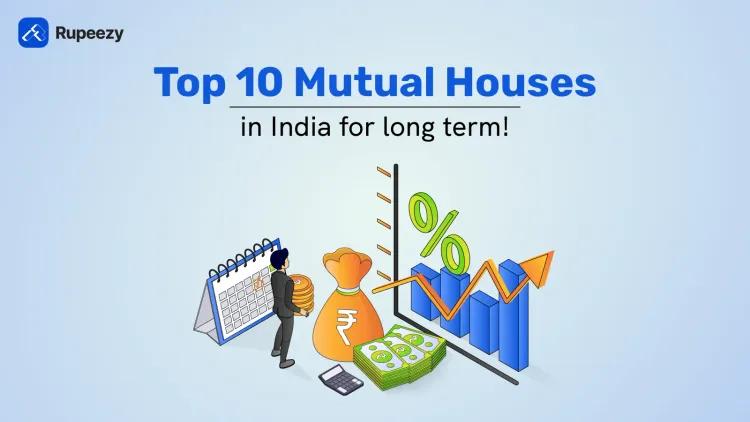What is Riskometer and How to Choose Funds by Risk Level?


00:00 / 00:00
Have you ever selected a mutual fund because it shows past high returns without checking what risk you could face or what is associated with it? Have you ever chosen a mutual fund based solely on its historical high returns, while ignoring the risk? What if there were a simpler way to determine the risk associated with the fund you are considering investing in? That's where the Riskometer comes into play, a tool that can help you make an investment decision.
A metric that shows the level of risk associated with a mutual fund scheme is called the riskometer. It allows investors to understand how much risk they are taking when investing in a specific fund. Understanding the riskometer is more than just useful; it is essential.
In this article, we will cover everything you need to know about the Riskometer, including its meaning, why SEBI introduced it, how it works, the risks associated with it, and how to use it to make smarter financial choices.
What is Riskometer in Mutual Funds?
Riskometer in mutual funds is a visual tool designed to help investors understand the level of risk associated with a specific mutual fund in which they are investing. Every financial asset in a mutual fund, such as a debt, equity instrument, or other financial asset, carries a specific risk value. The Riskometer presents a comprehensive picture of "Risk" in mutual fund schemes by assigning a risk score to each asset type.
Why did SEBI Introduce the Riskometer in Mutual Funds?
SEBI established the notion of 'product labelling' for the mutual fund industry in March 2013. The move was intended to assist investors in interpreting the inherent risk associated with a plan using simple colour-coded boxes. During the original phase, the product labeling system employed three colours: blue for low danger, yellow for medium risk, and brown for high risk. As a result, all fund houses must show the product label, including color code boxes depicting the levels of risk, in all scheme-related documentation and promotions.
The 'Riskometer' is a visual meter that SEBI introduced on July 1, 2015, to indicate risk in place of color-coded boxes. This meter will show the level of risk in any individual scheme based on the five levels prescribed by SEBI.
Five years later, the regulator upgraded the system further, and in October 2020, SEBI ordered that the riskometer have six levels instead of five, starting January 1, 2021. As a result, the riskometer, which formerly consisted of five risk levels, was replaced with six risk groups on January 1, 2021. The classifications for risk levels now vary from 'low' to 'very high risk'. SEBI also provided specific recommendations for assessing the risk levels of the programs.
The Association of Mutual Funds in India (AMFI) has also set forth specific rules for grading funds based on risk levels. SEBI guarantees that investors are better equipped to assess potential risk before investing by prominently showing the MF Riskometer up front.
What are the Different Levels of Risk in the Riskometer
The Riskometer can help you comprehend the various risk levels connected with mutual funds. It indicates how much risk a fund has on a scale ranging from low to very high. There are six distinct risk levels in the riskometer of mutual funds.
Low: The risk of losing your money is low, and the fund produces consistent returns over a long period. It is perfect for those who want to protect their wealth.
Low to Moderate: The danger of losing money invested is low, but the long-term returns are moderate. This is ideal for investors willing to take on a moderate level of risk in exchange for medium to long-term returns.
Moderate: The risk of losing money is moderate, and the fund produced balanced returns. It is suitable for portfolio diversification with some risk.
Moderately high: The risk of losing money is slightly higher, and while the fund generates high returns over a longer period of time, the risk is also slightly higher due to uncertainty and volatility.
High: The risk of losing money is high, and funds in this category are likely to generate high returns. However, there is a significant danger of losing your money.
Very High: The possibility of losing your money is extremely high. It is suitable for investors with a high risk tolerance looking for high-return investment opportunities.
This allows investors to compare the above level of risk to their own risk tolerance before investing in a specific mutual fund scheme.
How is the Riskometer for a Scheme Derived?
The Riskometer for a mutual fund scheme is derived in two different ways, one for the equity portion and the other for the debt portion. Let us understand how it works in both cases.
In Case of an Equity Mutual Fund Scheme
In equity mutual fund schemes, the Riskometer score is derived by evaluating each stock in the portfolio based on three key factors.
First, market capitalization plays a major role. Small-cap stocks carry higher risk than mid-cap stocks, which in turn are riskier than large-cap stocks. These risk values are reviewed every six months.
Second, volatility is considered; stocks that show higher daily price fluctuations over a two-year period are assigned a higher risk value.
Lastly, the impact cost, which reflects liquidity risk, is assessed. Stocks with low trading volumes that show large price shifts during big transactions are seen as riskier. The final risk score for the equity portion of a fund is the weighted average of these individual stock scores.
In Case of a Debt Mutual Fund Scheme
For debt-oriented schemes, the Riskometer is derived using three major risk factors.
Credit risk evaluates the likelihood of default. Instruments with high credit ratings (like AAA or government securities) are less risky, while those with lower or no ratings carry higher risk.
Interest rate risk is assessed using the Macaulay Duration of the portfolio. Longer duration bonds are more sensitive to interest rate changes and thus have higher risk values.
Liquidity risk takes into account the tradability of debt instruments, considering aspects like listing status, credit ratings, and the structure of the instrument. Together, these metrics determine the overall risk profile of the debt portfolio.
How to choose Mutual Funds based on your Risk Profile
Understanding your risk profile is crucial for making sound investing decisions. Here are some ways to select mutual funds based on your risk profile:
1. Identify Your Financial Goal
Determine your investment objectives, such as saving for retirement, purchasing a home, or funding education. Consider the time frame of each goal and the amount of money required.
2. Define Your Risk Profile
Assess your risk tolerance and capacity by taking into account your financial status, age, and investing time horizon. Younger investors frequently have a higher risk tolerance and capacity because they have more time to recover from potential losses, whereas older investors may prefer lower-risk investments to conserve capital.
3. Select the Appropriate Mutual Fund Scheme
Choose funds based on your risk tolerance and goals; low-risk funds are ideal for short-term, safe aims. Higher-risk funds are suitable for long-term objectives and higher returns.
4. Review and Modify
Examine and adjust your portfolio on a regular basis to ensure that it is consistent with your risk tolerance and financial objectives. Make sure your investments still match your risk level and goals. If things change like your income, goals, or market conditions, adjust your portfolio to stay on track.
5. Use Risk Profiling Tools
Financial institutions offer online risk analysers and calculators to help you better understand your risk profile and make informed investment decisions and there are different tools to measure the risk profile in mutual funds such as Risk-reward ratio, Standard deviation, Beta and sharpe ratio
Riskometer vs Mutual Fund Rating
Let's look at the key differences between Riskometer and Mutual Fund Rating to get a better understanding of how both tools can help us make decisions. The key distinctions are listed in the following table:
Aspects | Riskometer | Mutual Fund Rating |
Meaning | It is a visual measurement tool that shows the levels associated with a specific mutual fund scheme. | A Mutual fund rating is typically a measure of a fund's historical risk-adjusted performance over various time periods relative to other funds in the same category. |
Purpose | The mutual fund riskometer helps investors align their investments with their financial goals and risk tolerance by providing a quick snapshot of risk levels. | This helps investors identify funds that are likely to outperform the market. These ratings are intended to assess both previous performance and future potential. |
Provided by | SEBI | Morningstar, CRISIL and Value Research. |
Scale | Low to very high | Star ratings range from 1 (strong buy) to 5 (strong sell). |
Conclusion
As we come toward the end of this discussion, it’s clear that the Riskometer is a valuable tool that helps investors understand the risk levels of mutual fund schemes and align them with their financial goals. It simplifies complex risk assessments into an easy-to-read visual guide. However, while the Riskometer in mutual funds offers a strong starting point, investors should not rely on it alone. A proper investigation into a fund’s past performance, investment strategy, and alignment with personal financial plans is essential before making any investment decisions.
FAQs
Q. What is the risk meter of SEBI?
The Riskometer is a mutual fund risk assessment scale that was created by the Securities and Exchange Board of India (SEBI) to assess the degree of risk associated with the mutual fund schemes in which investors invest.
Q. What is a high-risk meter?
When it comes to mutual funds, a high-risk meter means that there is more risk involved in the investment. A high-risk metre corresponds to the 'High' risk level, which is appropriate for investors willing to take significant risk in exchange for the possibility of significant returns.
Q. What is the 7-5-3-1 rule?
The 7-5-3-1 rule for SIP investments suggests staying invested for at least 7 years, diversifying across 5 asset classes, being mentally prepared for three emotional phases (disappointment, irritation, panic), and increasing your SIP amount by 1% annually. This approach promotes long-term discipline, emotional stability, and consistent wealth growth.
Q. What is the 3-5-10 rule for mutual funds?
A straightforward rule that is advised while investing in equity mutual funds is the 3-5-10 rule. It recommends investing for at least five years, maintaining an investment for ten years or longer, and having a minimum investment horizon of three years. This gives your investments enough time to weather any short-term market turbulence and reap the rewards of long-term compounding.
Q. How do you measure the risk of a mutual fund?
There are tools that measure the risk of a mutual fund, such as alpha, beta, standard deviation and Sharpe ratio.
Q. Does a Higher Riskometer Level Mean Higher Returns?
These funds, which invest in erratic equities or overseas mutual fund units, are incredibly dangerous. They cater to those who are prepared to make high-risk, high-reward investments.
Q. How Often is the Riskometer Updated?
The Riskometer is updated monthly in accordance with SEBI regulations.
Check Out These Related Articles |
The content on this blog is for educational purposes only and should not be considered investment advice. While we strive for accuracy, some information may contain errors or delays in updates.
Mentions of stocks or investment products are solely for informational purposes and do not constitute recommendations. Investors should conduct their own research before making any decisions.
Investing in financial markets are subject to market risks, and past performance does not guarantee future results. It is advisable to consult a qualified financial professional, review official documents, and verify information independently before making investment decisions.

All Category









